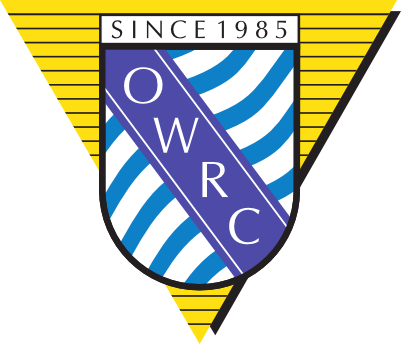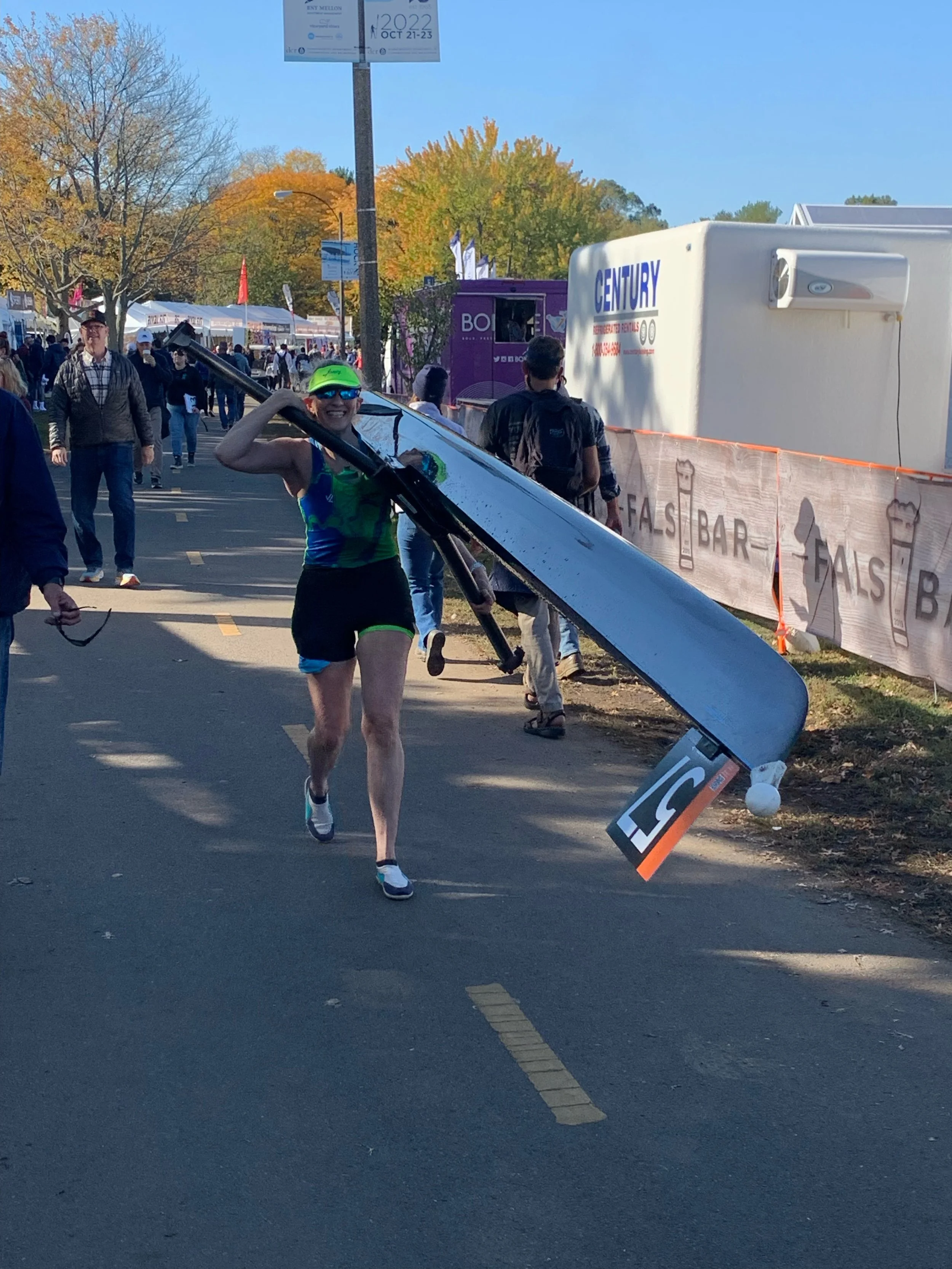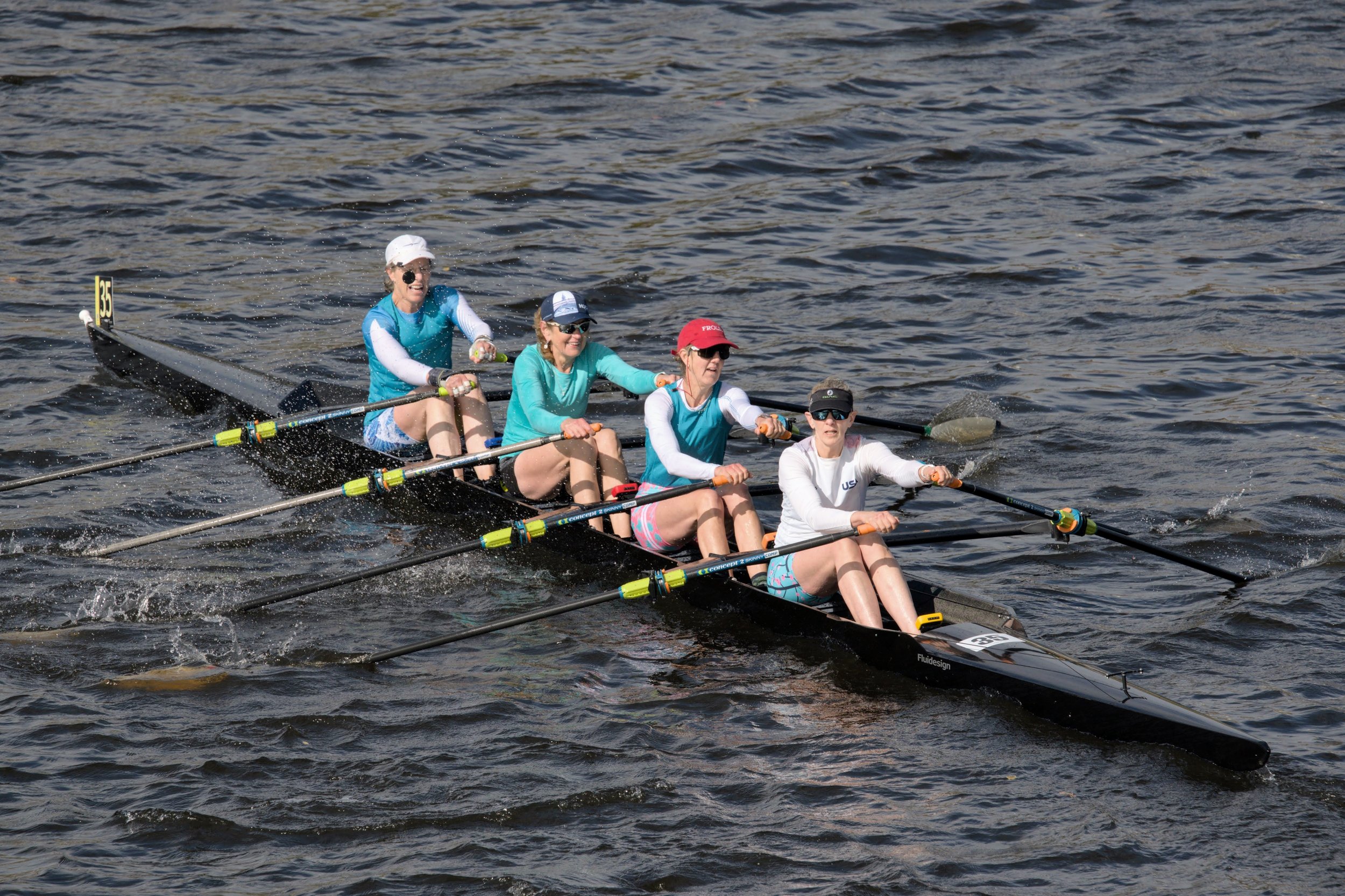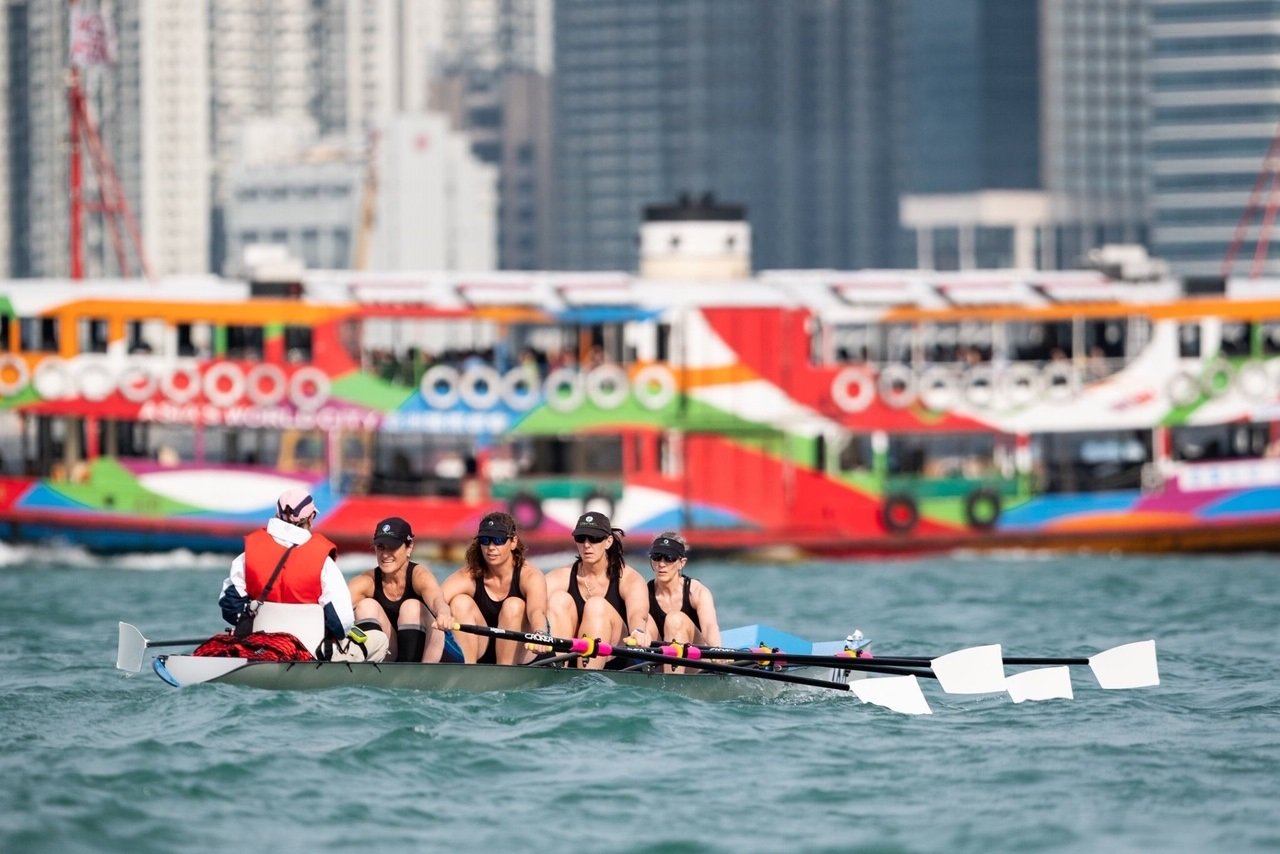To meet Sharon Wienbar, we must first know what she does. After a career in consulting, investing and marketing, Sharon now serves on the boards of a handful of non-profits, including USRowing. As the national governing body for the sport of rowing in the United States, USRowing promotes rowing at all levels of competition. Two years ago, Sharon was elected by the members of USRowing to represent the western part of the states. (That includes OWRC.)
But that’s not how Sharon came to rowing. No matter when you start rowing -- high school, college, later in life – it usually comes down to timing. (Ah, so much in rowing is about timing.)
Although she grew up in Long Beach, a beach town in southern California, and attended Harvard, an Ivy League known for rowing, it wasn’t until Sharon was 48 that she “discovered” the sport. She was trying to be healthy when a friend at her San Mateo gym suggested she try rowing. The line went something like this: Go to masters, learn to row, it’s in the daylight. Just try it.
“I was a working mom, my kids were in middle school and high school, and I was looking for a morning sport.” She gave it a try.
At the 2022 Head of the Charles regatta in Boston, MA.
Sharon went to BIAC in Redwood City. It came with a month's membership, and it was a low barrier to entry. She appreciated the people who were especially helpful when she was terrified to step into the boat her first time. (Sharon, we can so relate.) After that initial trepidation, she took to it quickly.
And again, it was all about timing: BIAC practice started at 5am. “I could still see the kids off to school,” she says. Sharon is 61 now and not only does she compete in races, but like OWRC member Liz Kantor, she also rows when she travels. (Or travels when she rows?) Sharon and Liz met on a memorable trip to the Maldives, and you can hear a similar passion in Sharon’s voice when she recounts her trips to Russia and Croatia.
Eventually, she took up coastal rowing. Coastal rowing boats are heavier, wider, and have an open stern transom. They’re harder to tip over and if waves fill them up, the water will run right back out—unlike a scull that requires you open the bailer. It means you can take them out in almost any conditions. “That makes them really fun, and you have the liberty to do whatever you want,” says Sharon.
What else does she like about coastal rowing? In team rowing, which is what Sharon learned at BIAC, the emphasis is on having precise technique and being exactly in sync with your teammates. This requires conformity. In coastal rowing, “instead of trying to conform you have to be one with the water.” You’re reading the water and being very loose, relaxing your body weight in the boat and flowing with the water. Sounds zen like.
San Francisco, which is among the most beautiful places to row in the world, is a little zen and a little un-zen. “The hills, the bridge, and sometimes the water are so ridiculously bad that all you can do is laugh.” Sometimes the currents are meeting and suddenly you’re fighting for your life. Then you round the corner and you’re in the lee of the island and the water is like glass. It's what makes it so great. Ditto for anyone else that rows in the bay area.
What’s next for Sharon and USRowing? Hopefully, what’s next is a deluge of interest in rowing, which should come with the recent films and books that feature rowing including Lessons in Chemistry and The Boys in the Boat. “We hope the movie will drive a lot of interest,” says Sharon. We hope so too.






